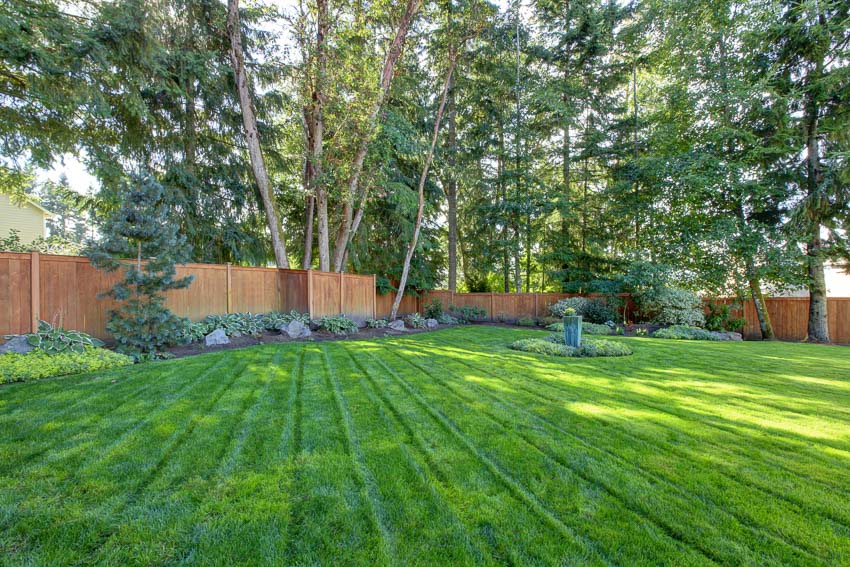The Ultimate Guide to Growing Grass Where the Sun Don’t Shine
If you’re in the dark about how to grow grass in the shade, shed some light on the subject with proven methods that will give you a thick, green lawn in those hard-to-grow areas. Master the art of growing grass in the shade by learning about the right grass for your area and the effects of shade on your lawn.
The Challenges of Growing Grass in Shaded Areas
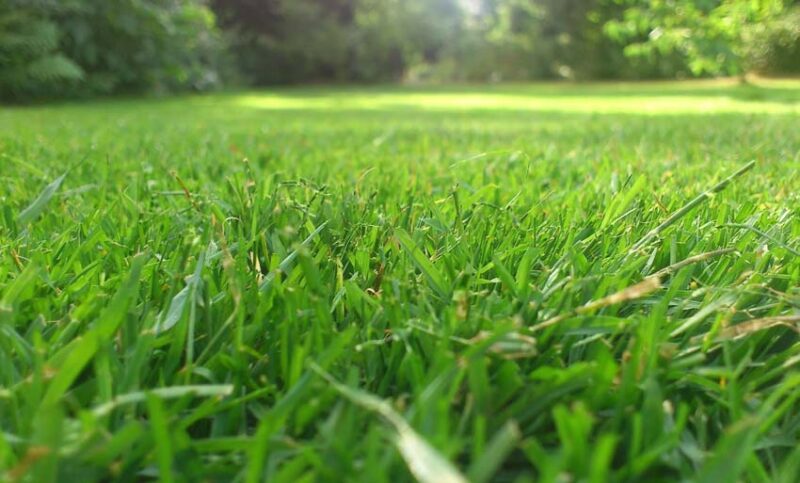
Yard enthusiasts have to work hard and solve many problems to make their lawns look their best. However, getting grass to grow in the shade is one of the biggest challenges professional and hobbyist landscapers face.
Limited Sunlight
Your grass uses photosynthesis to convert light into chemical energy for strong, healthy growth. Without adequate sunlight, it reaches for the sky to get more light, growing thin and weak.
Your grass will eventually lose its color, and as it gets weaker, it becomes susceptible to stressors like foot traffic, diseases, and pests. To make matters worse, shade trees create the perfect conditions for fungal growth and other diseases that can damage your lawn.
Competition for Nutrients and Water
With strong growth above ground, the roots of your grass are strengthened. Not only does your grass have to compete with nearby plants for light, but it also has to fight for nutrients and water.
When grass doesn’t have a well-established root system, it struggles to absorb nutrients and water, making it even more fragile and less able to compete with surrounding trees and shrubs.
Knowledger is power! Guard your turf with our guide to getting rid of grubs.
Best Grass Species for Growing in the Shade
All plants need water, nutrients, oxygen, and light to grow and thrive, but different species of plants require varying amounts of these. You can make grass grow in the shade by choosing the right type of grass.
Cool-Season Grasses for Shaded Areas
Cool-season grasses are best for the climates in northern regions, which have cooler summers and long, harsh winters. The best cool-season grasses for shaded areas in northern parts of the United States are fine fescue and Kentucky bluegrass.
Fine Fescue
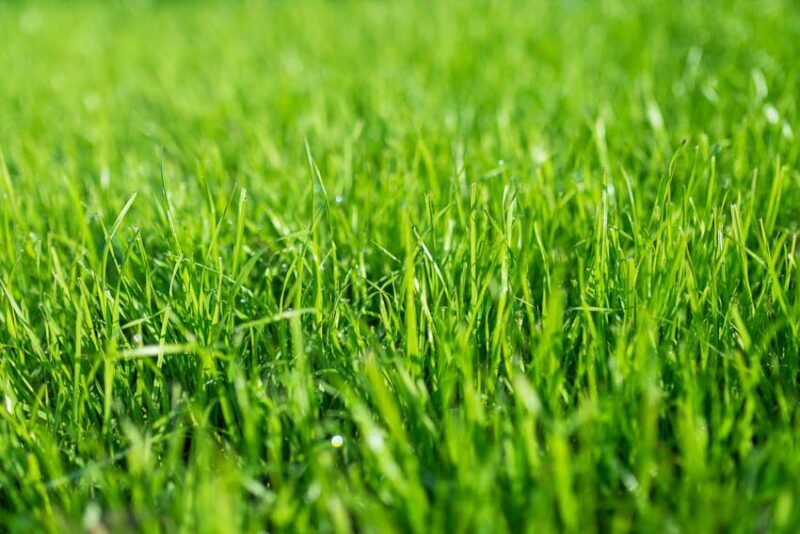
Fine fescues are resilient, shade tolerant, and require less water and fertilizer than other cool-season grasses. Their dense, bunching growth habit and low-maintenance requirements make them an ideal choice for areas with cool weather and dry summers, similar to the conditions found under the shade trees in your yard.
Five species of fine fescues are regularly used in lawn mixes and often combined with other cool-season grasses. Fine fescues are generally referred to as a group, but it can be helpful to understand their differences when choosing the best grass species for shady areas in your yard.
- Strong red creeping fescue (Festuca rubra) prefers shade and thrives in well-drained soils and cold climates.
- Slender red creeping fescue (Festuca rubra litoralis) does well in coastal areas.
- Chewings fescue (Festuca rubra subspecies commutata) has a high resistance to diseases and tolerates low temperatures.
- Sheep fescue (Festuca ovina) is a grazing fescue that withstands heavy foot traffic.
- Hard fescue (Festuca trachyphylla) is often used in sports fields and parks.
Kentucky Bluegrass
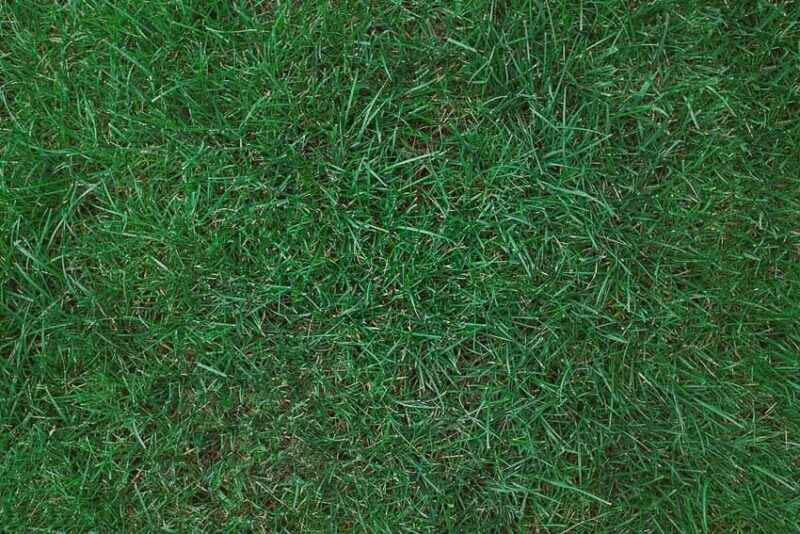
Kentucky bluegrass (Poa pratensis) is a running type of grass that spreads by rhizomes. It’s ideal for cool climates and is shade tolerant. Even though it isn’t native to North America, Kentucky bluegrass is a common meadowgrass that has spread all over the cooler regions of the United States.
Botanists have been cultivating hybrids of Kentucky bluegrass for specific conditions. “Glade” and “BenSun” have long been the best cultivars for shaded lawns, but a new variety called “NuGlade” is outperforming them in terms of shade tolerance.
Rough bluegrass (Poa trivialis) is another grass species with high shade tolerance. It’s closely related to Kentucky bluegrass and often found in cool-season lawn seed mixes for shaded lawns.
Warm-Season Grasses for Shaded Areas
Warm-season grasses thrive in the hotter regions of the United States. They are native to tropical parts of the world and are the best grass species for areas with scorching hot summers.
For shaded lawns in the south, the best warm-season grasses are St. Augustine and Zoysia grass.
St. Augustine Grass
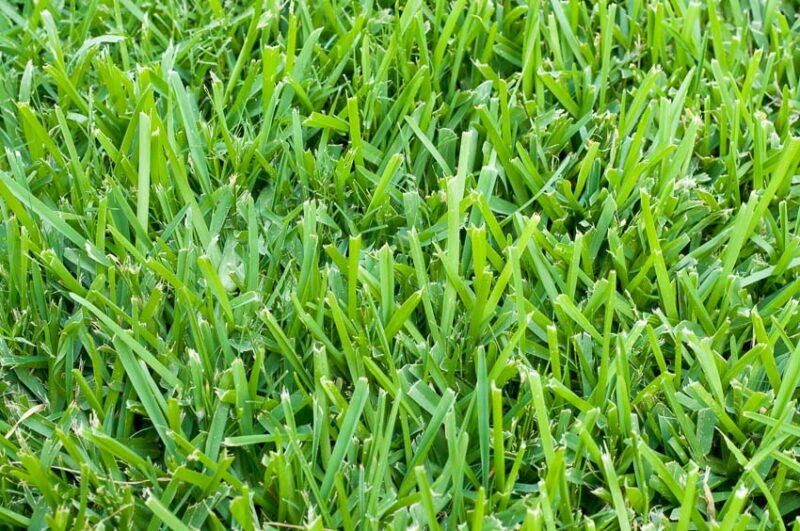
A warm-season grass that does best in tropical climates, St. Augustine grass (Stenotaphrum secundatum) is a top choice for shady areas. It is dark green with thick blades and spreads easily by stolons .
Like Kentucky bluegrass, botanists have been working to cultivate varieties that are easier for home landscapers to use. Until recently, a viable seed was unavailable for St. Augustine grass, which was usually propagated by plugs or sod.
St. Augustine grass needs at least four hours of sunlight to thrive. There are several cultivars of St. Augustine grass best for shade:
- Palmetto
- Seville
- Bitter Blue
- Sapphire
Zoysia Grass
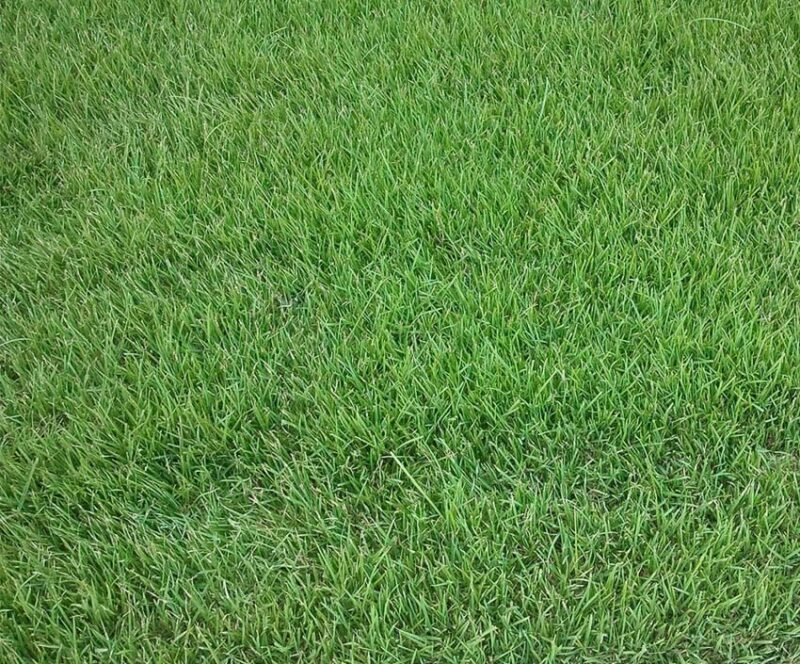
One of the most versatile grasses for warm-season lawns is Zoysia grass. It tolerates a wide range of conditions, including variations in temperatures, light, and moisture. Zoysia is another creeping grass and often does well on golf courses. It has greater heat tolerance and is less susceptible to pests.
It’s also ideal for coastal areas in temperate climates.
There are several cultivars in the Zoysia genus, including these four, which are known for their shade tolerance:
- Emerald
- Palisades
- Royal
- Zeon
Choosing the best grass seed for shade starts with selecting either cool or warm grasses. From there, you can select a mix designed for the amount of sunlight in your yard.
Methods for Growing Grass in the Shade
Grass that grows in the shade has different needs than grass that grows in full sun. Mix up your lawn care routines to adjust for variations in nutrients and water requirements.
Preparing the Soil for Shade-Tolerant Grass
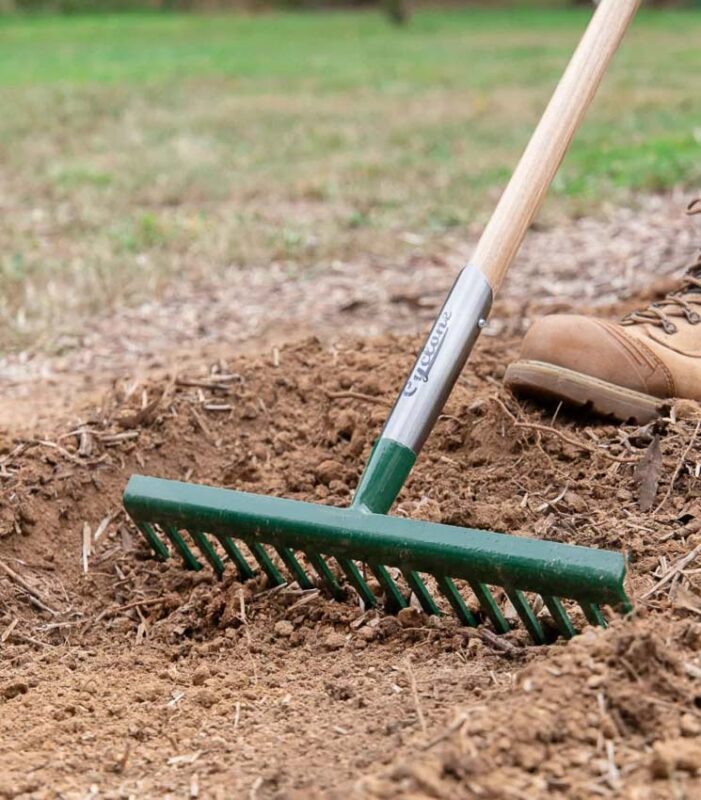
Dry soil repels water, so you should moisten the soil thoroughly the day before planting grass seed in shaded areas. You can lightly till the soil and rake it smooth for new lawns, removing any sticks or debris.
Before planting grass seed in shady areas, it’s helpful to spread a layer of compost to improve the moisture retention of your soil. If you’re overseeding your lawn, spread the compost thin enough to see the grass, then spread shade-tolerant grass seed over the top.
Soil Testing and Amendments
It always pays to test your soil before you add amendments, and this is especially true when you’re preparing the soil for shade-tolerant grass. The soil underneath evergreen trees has a lower pH, and you may need to lime your lawn.
Liming your lawn will balance out the pH and increase the availability of nutrients in the soil.
Aeration and Decompaction
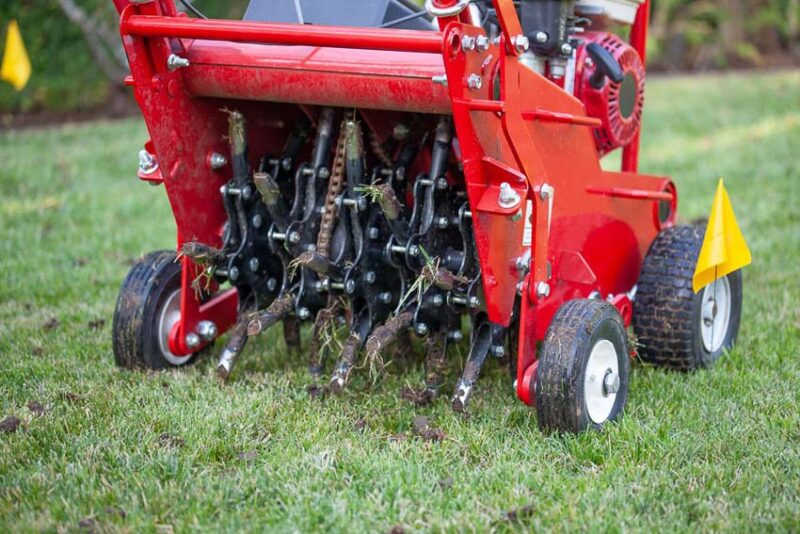
Soils can become waterlogged without sunlight, and shaded lawns benefit from aeration and decompaction to improve drainage. By aerating your soil, you increase the availability of oxygen so that the roots of your lawn can absorb nutrients.
It also makes it easier for your grass to develop deeper roots.
Proper Seeding and Sodding Techniques
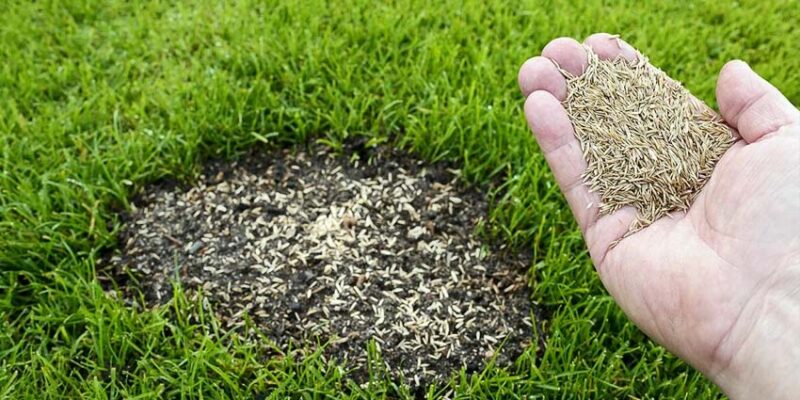
Whether you’re planting grass seed or using sod to revitalize your lawn in the shady areas of your yard, use proper seeding and sodding techniques for the best results.
Choosing the Right Time to Plant
The best time to plant grass seed is during peak growing conditions in your area. In cool-season regions, the best time to plant grass is in the fall, but you can also plant new lawns in the spring as long as you nurture them through the hottest parts of summer.
Warm-season grasses do best when planted in the spring and early summer. They are able to tolerate hot weather, but they need plenty of time to fully establish themselves before cold weather comes in the fall.
Ongoing Maintenance for Shaded Grass
After planting a new lawn in the shade, you can ensure the healthy growth of your grass by following the best practices for shade grass maintenance.
Mowing and Watering Strategies
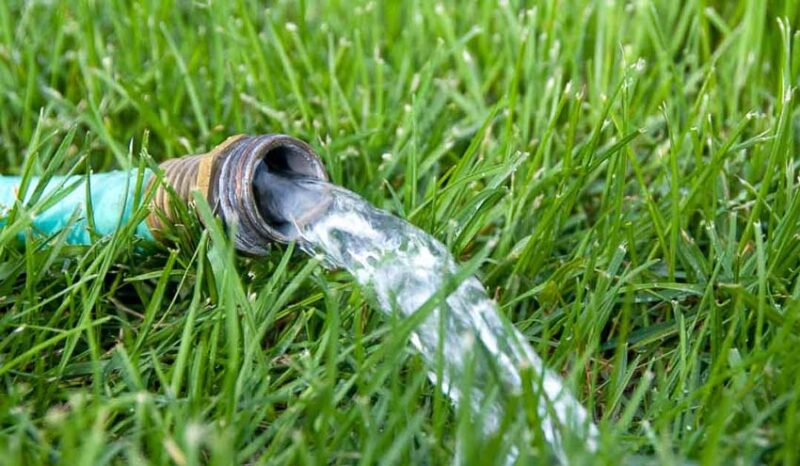
With sunlight at a minimum, the main goal of growing shade grass is encouraging deep roots that support the plants’ search for nutrients and water. Mowing your grass tall will ensure strong root development that can support more green growth.
And, since lawns in the shade don’t grow as fast as lawns in the sun, you don’t have to mow shaded lawns as often.
Grass growing in the shade may also need less water than grass growing in full sun. However, trees keep water from reaching the ground, and your grass will have to compete with tree roots for moisture intake.
Use a soil moisture sensor to closely monitor the ground in shaded areas to ensure that your lawn has adequate moisture without letting it get waterlogged.
Fertilizing and Pest Control
It’s important to understand how to fertilize your lawn so you can adjust for shaded areas. Since nitrogen encourages green growth and shaded lawns don’t grow as fast, a shaded lawn needs about half as much nitrogen as a lawn in full sun.
Shaded lawns benefit from healthy root systems. To stimulate root growth, use fertilizers higher in potassium (K) than nitrogen (N) for shady areas.
A good N-P-K ratio for a shaded lawn is 3-20-20. You can also use fertilizers combined with insecticides or fungicides to ensure your lawn is healthy and disease free.
How to Grow Grass in the Shade: Additional Tips
Growing grass in the shade is challenging, and it often helps to prune your trees to allow a bit of light to shine on your lawn.
Pruning Trees and Shrubs for More Sunlight
It’s not just the grass underneath your trees and shrubs that benefit from pruning. Proper pruning techniques let more light into the center of your trees, encouraging strong growth and good form.
Most grass needs about 8 hours of sunlight, but shade-tolerant grasses will grow well with 4 hours of partial sun and another 4 hours of filtered sunlight. By pruning the trees and shrubs in your yard, you can let more light in so your grass will grow better.
Selective Pruning Techniques
Prune your trees and shrubs in the spring. Start by removing dead or damaged limbs. For evergreen trees, avoid pruning the top. You can lift them up but never take over one-third of the growth.
With deciduous trees, selectively prune to allow slanted light to reach the ground where it can benefit your grass the most. Trim branches that are pointing down, but avoid shocking your tree by taking off too much at once.
Balancing Shade and Sunlight
Pay close attention to how much sunlight is shining on the shaded areas of your yard during different parts of the day before you start pruning your trees. Even though shade trees can make it challenging to grow grass, they serve many other purposes and are nice to sit under on a hot summer day.
Incorporating Shade-Tolerant Groundcovers
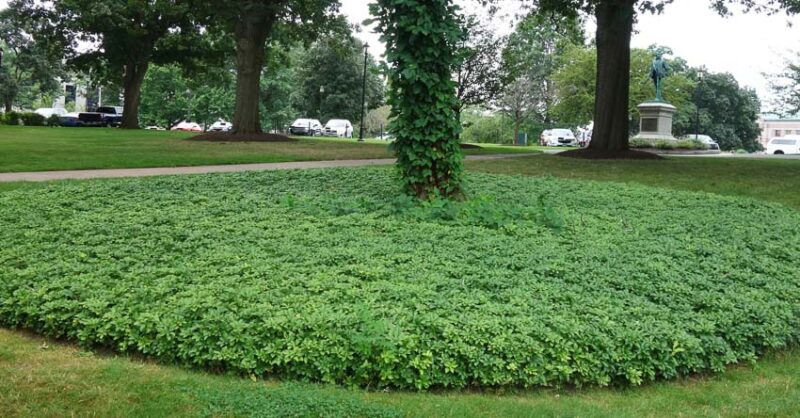
There are other alternatives if you’re finding it difficult to grow grass in the shade. Several types of shade-tolerant ground covers can create striking color and texture contrasts that add depth to your landscaping and improve the aesthetics of your yard.
Alternative Groundcovers for Shaded Areas
There’s no rule that says you have to grow grass in the shady parts of your yard. Instead of struggling to grow grass in the shade, try planting a ground cover that thrives in full shade and enjoy the ease and beauty of low-maintenance ground covers.
Here are a few of the best shade ground covers:
- Pachysandra
- Sweet woodruff
- Vancouveria
- Ferns
- Hostas
- Wild ginger
- Bunchberry
With ground cover, you can create a diverse ecosystem in your backyard that provides food and shelter for wildlife.
Creating a Mixed Lawn with Grass and Groundcovers
Planting a mix of grass and groundcovers in your yard has many benefits. You can use groundcovers as an alternative to lawns, and when combined with grass, you get the best of both worlds.
Not only does the combination result in a unique and diverse appearance, but it can also save water and require less maintenance than a traditional lawn.
When creating a mixed lawn with grass and groundcovers, you still need to keep them separate. Instead, plant ground covers adjacent to the grass in your yard in broad planting shapes that enhance the overall design of your landscape.
When using a mix of lawn and grass as ground cover, use low-growing ground covers like creeping thyme and campanula. Use lawn edgings to keep plantings separate and make paths to reduce damage from foot traffic.
Paths will protect your plants and enhance the appearance of your mixed lawn.
FAQs
Can I grow grass in an area that gets no direct sunlight?
Grass can grow without direct sunlight as long as it gets enough filtered light to photosynthesize light into energy. Even though shade-tolerant grasses can grow in dense shade, they have different lawn care requirements.
How long does it take for grass to grow in the shade?
Grass grows much slower in the shade than in the sun. Therefore, you can encourage lawns to grow in full sun with more nitrogen, but shady lawns can’t tolerate it without sunlight. Generally, shaded lawns require half as much fertilizer as lawns that grow in full sun.
How can I improve the health of my existing shaded lawn?
You can improve the health of your existing shaded lawn in several ways.
Start by closely monitoring the moisture in the soil to ensure it’s not getting too much or too little. Next, keep your lawn mowed tall and use a fertilizer high in potassium to encourage strong root development.
You can also aerate your lawn to improve drainage and increase the availability of oxygen in the soil. If that fails, you may need to overseed your lawn with a shade-tolerant grass seed mix that will do better in your yard.
Can I use the same lawn care routine for shaded and sunny areas?
Your shaded lawn has different needs than the lawn in the sunny areas of your yard, so you can’t use the same lawn care routine in both areas and expect the same results. You should adjust your lawn care practices in shady areas for the best results.
For every maintenance routine, there’s a budget. So be sure to check out our Guide to Lawn Care Costs.
Should I overseed my shaded lawn more frequently?
You may need to overseed your shaded lawn more frequently, especially if you notice weak growth. To overseed a shady lawn, spread a thin layer of compost on your existing lawn. Ensure that the compost is thin enough that the grass shows through, then use a broadcast spreader to apply a mix of shade-tolerant grass seed.

